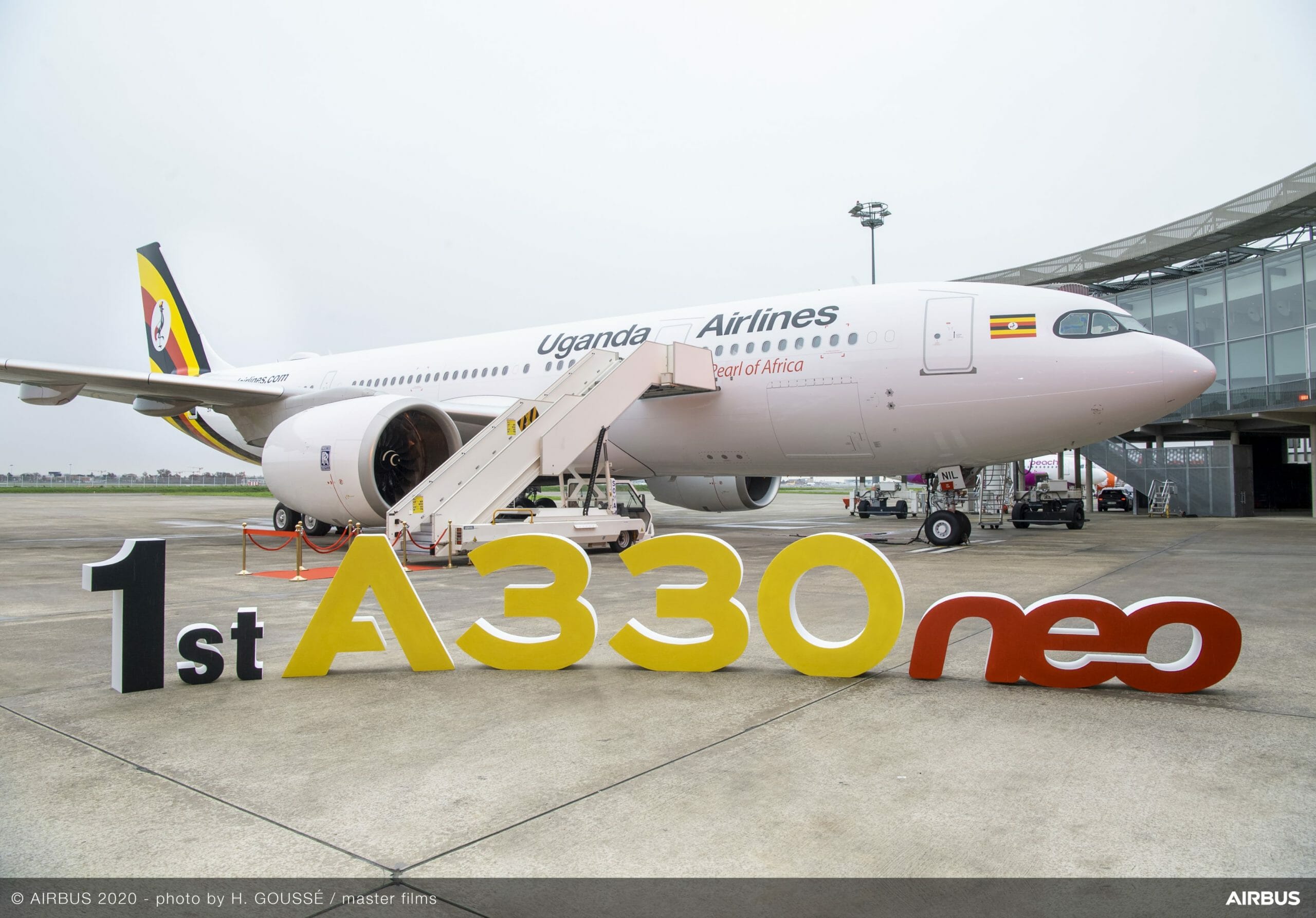
First A330neo delivery for Uganda Airlines scaled
It is months away before a formal request for proposals is issued but manufacturers are already angling for looming opportunities at flag carrier Uganda Airlines. The airline is feeling an acute gap in its fleet that it wants to be filled by what is being generally described as a “mid-range aircraft” to seat between the 76-seat CRJ-900 and the 254-seat Airbus A330-800. Uganda Airlines weighs fleet options as CRJ limitations set in
The two shareholders of the government-owned airline – the Ministry of Works and Transport and the Ministry of Finance- are also keen to advance plans for the acquisition of a dedicated freighter. The carrier currently operates a combined fleet of four Mitsubishi CRJ-900s and a pair of A330-800 neo.
CEO Jenifer Bamuturaki confirmed reports of the planned acquisitions, saying internal conversations about future fleet development have started. “It has been agreed that we need a mid-range aircraft. The question is do we go with Airbus or Boeing?” Minimum considerations for the proposed aircraft are a seating capacity of 120-170 passengers and the ability to meet demand on heavy routes to West Africa, where the airline plans to launch services in late 2022. It should also be able to substitute the A330 on medium-haul routes such as Dubai, Mumbai, and even London. Uganda Airlines said earlier this year that it hopes to launch services to London later this year.
Bamuturaki told AirInsight that in light of the thriving cargo market as well as the experience from the Covid-19 pandemic that saw airlines continue to fly cargo while passenger traffic continues, acquisition of a freighter would come ahead of the mid-range aircraft. “The shareholders are keen on cargo and we believe there’s a solid business case for a freighter,” she said without revealing how many cargo aircraft were under consideration.
She explained that while the CRJ fitted the regional model best when the airline was set up back in 2016, operational experience had exposed severe limitations at the furthest end of the regional route network. On the Johannesburg-Entebbe sector, for instance, huge tradeoffs have to be made between passengers and baggage in holds. On occasions, passengers have not been able to travel with their luggage on the same flight. Similar limitations would apply to Addis Ababa because of its higher elevation. Passenger traffic is still too thin to justify the deployment of the A330 on regional routes.
In addition to a second point in the DRC, Uganda Airlines also wants to launch into West Africa with service to Accra and Lagos. Initially using the CRJ, Lagos will also act as a technical stop between the two points.“The CRJ is a good aircraft to which we remain committed because it has given us superior economies, especially during the downturn. But we now have to look elsewhere in order to accommodate future growth. However, the selection is not a straightforward matter because we also have to be careful not to add more complexity to the fleet,” Bamuturaki says.
Views: 10




It makes sense to think about optimisation of the fleet at this time. However I am still intrigued by the “loud silence” on any possibilities of reviving East African Airways and ringfencing this against the political factors that decimated it in the late 1970s. Wouldn’t that lead to better rationalisation of resources, operations, and opportunities?